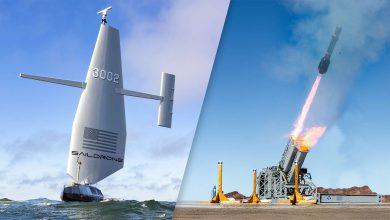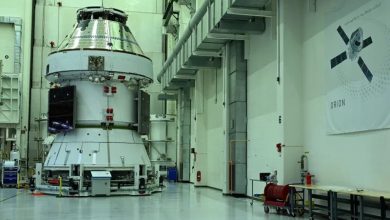
“Final Frontier Unleashed: Lockheed Martin’s Last SBIRS Missile Warning Satellite Takes Flight for US Space Force”
After a triumphant launch from Cape Canaveral Space Force Station in Florida today, the U.S. Space Force is now in contact with the sixth Space Based Infrared System Geosynchronous Earth Orbit (SBIRS GEO)-6 satellite, developed by Lockheed Martin (NYSE: LMT).
The ultimate satellite in the SBIRS series, GEO-6 integrates into the U.S. Space Force’s network of missile detection satellites, which are armed with robust scanning and staring infrared observation sensors.
“The demand for Overhead Persistent Infrared systems has reached unprecedented importance,” stated Michael Corriea, vice president of Lockheed Martin Space’s Overhead Persistent Infrared (OPIR) Mission Area. “At Lockheed Martin, we are innovating to meet evolving requirements prompted by emerging threats in our military clients’ landscape, paving the way for future advancements.”
The GEO-6 satellite serves as a crucial stepping stone toward more resilient missile detection that will be delivered by SBIRS’ successor, the Next Generation OPIR GEO System (NGG). Similar to SBIRS GEO-5 and GEO-6, NGG will leverage Lockheed Martin’s upgraded LM 2100 Combat Bus™, which boasts enhanced capabilities such as cyber hardening, durability features, increased spacecraft power, and superior propulsion and electronics.
The SBIRS GEO-6 satellite is reacting to the U.S. Space Force’s directives as intended. Signal acquisition was acknowledged 3 hours and 43 minutes post-launch at 6:29 a.m. EDT aboard a United Launch Alliance (ULA) Atlas V rocket. The satellite is presently orbiting autonomously following separation from the rocket. The onboard sensors gather critical data that enables the U.S. military to identify missile launches, bolster ballistic missile defense, enhance intelligence gathering, and improve situational awareness on the battlefield.
A Milestone for Enhanced Resiliency
The OPIR mission has gained significant importance as ballistic missile technology has expanded globally, with over 1,000 missile launches monitored annually. Lockheed Martin acknowledges that upgraded technology is essential to enhance the existing missile warning framework and strengthen resilience against potential threats.
“SBIRS GEO-6 strengthens the current missile warning framework, and it symbolizes our progress towards achieving even greater technological capability and broader coverage with NGG,” Corriea remarked.
Lockheed Martin takes pride in being part of the SBIRS initiative led by Space Systems Command’s Space Sensing Directorate at Los Angeles Air Force Base. Lockheed Martin Space, based in Sunnyvale, California, serves as the prime contractor for SBIRS, with Northrop Grumman from Azusa, California, as the payload supplier.
This version contains synonyms and altered sentence structures while retaining HTML tags and ensuring it is keyword-rich for SEO.






